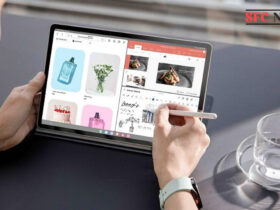In Short:
- Android 15 Beta 3 has a bug that constantly prompts for PIN entry on the lock screen, hindering notification management.
- Restarting the device offers a temporary fix, but a permanent solution from Google is awaited.
- Android 15 introduces a new “Device Diagnostics” feature for self-diagnosis of common smartphone problems.
Android 15 Beta 3 Lock Screen Bug:
A newly discovered bug in Android 15 Beta 3 disrupts the functionality of the lock screen, particularly for managing notifications. Users encountering this issue are forced to enter their PIN repeatedly, even for simple actions like deleting or expanding notifications. The bug seems to activate randomly and isn’t consistent across all devices. While restarting the phone offers a reprieve, the issue resurfaces after some time. Tweaking authentication settings like Face Unlock hasn’t proven effective either. The extent of this bug and Google’s planned fix timeline remain unclear.
Empowering Users with Self-Diagnosis Tools:
As smartphone manufacturers like Samsung and Google extend software support periods, the ability to diagnose and troubleshoot phone issues independently becomes more valuable. Often, complex hardware problems require professional intervention. However, for simpler issues, basic tests can pinpoint the cause and potentially lead to a solution. Recognizing this need, Google is introducing a novel “Device Diagnostics” feature within Android 15.
Introducing Device Diagnostics:
Android 15 Beta 3 introduces a new section named “Device Diagnostics” under “Settings > System.” This section offers two primary functionalities:
- Component Health: This section allows users to perform manual tests on key components like display, touchscreen, battery, and memory.
- Evaluation Mode: This mode facilitates a more comprehensive device evaluation using a secondary device.
Manual Tests for Display and Touchscreen:
The “Component Health” section features a display test showcasing various colors to detect screen defects. Additionally, a touch test allows users to identify areas with faulty touch input by turning a red screen white upon touch.
Battery and Storage Information:
The “Component Health” page also provides detailed information about the device’s battery and storage. The “Battery Status” provides insights into remaining capacity compared to original capacity, date of manufacture, first use, and charge cycles. It might also display the serial number and part status (if supported). Similarly, the “Memory Status” page showcases the remaining lifespan and total capacity of the memory chip.
Evaluation Mode for Advanced Diagnostics:
The “Evaluation Mode” necessitates a second device to thoroughly analyze the device under evaluation. Once the evaluated device scans a QR code displayed on the other device, a series of tests commence, some requiring an internet connection. These tests encompass the same display and touchscreen checks as the manual mode, along with additional examinations.
A concluding report summarizes the results, aiding in pinpointing potential problems within the device.






Leave a Reply